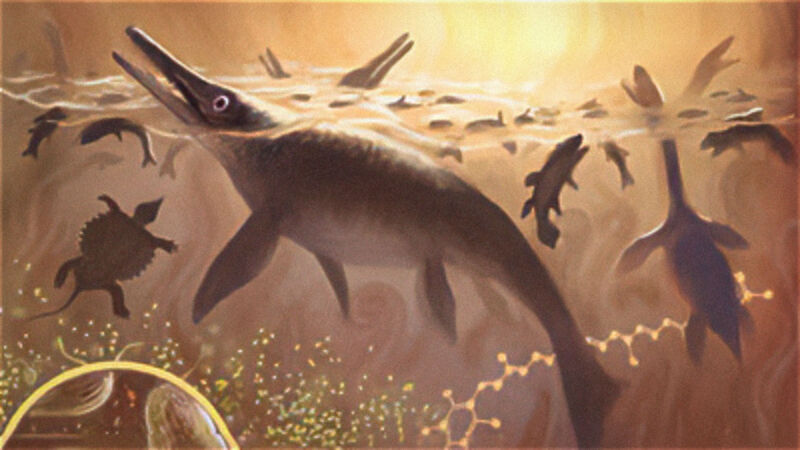
Enlarge (credit: Victor Leshyk)
The end-Triassic extinction, which happened 201 million years ago, was Earth’s third most severe extinction event since the dawn of animal life. Like today, CO2 rise and global warming were present, but the similarities don’t end there. As with today, it was a time of wildfires, deforestation, downpours, erosion, ocean acidification, marine dead zones, vanishing coral reefs, sea-level rise, and even insect plagues. There was also pollution by mercury, sulfur dioxide, halocarbons, and methane—and possibly even a damaged ozone layer.
“Something very violent occurred 201 million years ago, with great similarity in terms of CO2 with what we see is happening now,” said Dr. Manfredo Capriolo of the University of Oslo. That would seem to make it a good model to understand what’s going on now. But there are glaring differences—most notably the lack of humans.
Instead of the human pollution of today, the end-Triassic saw massive volcanic eruptions that emitted prodigious amounts of greenhouse gases and pollutants. There were other differences as well. During the Triassic, there was just one continent, called “Pangea,” and the climate started warmer and ice-free, with CO2 levels much higher than those of today. Dinosaurs had yet to dominate the planet, and there was no grass or flowers.
No comments:
Post a Comment